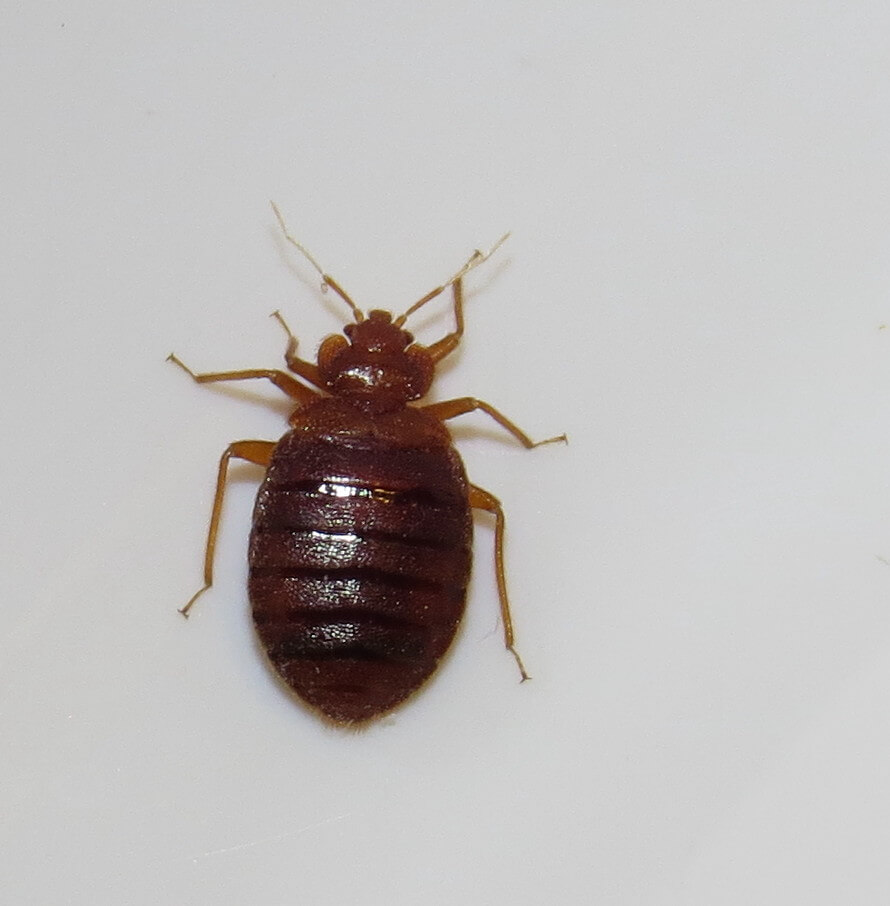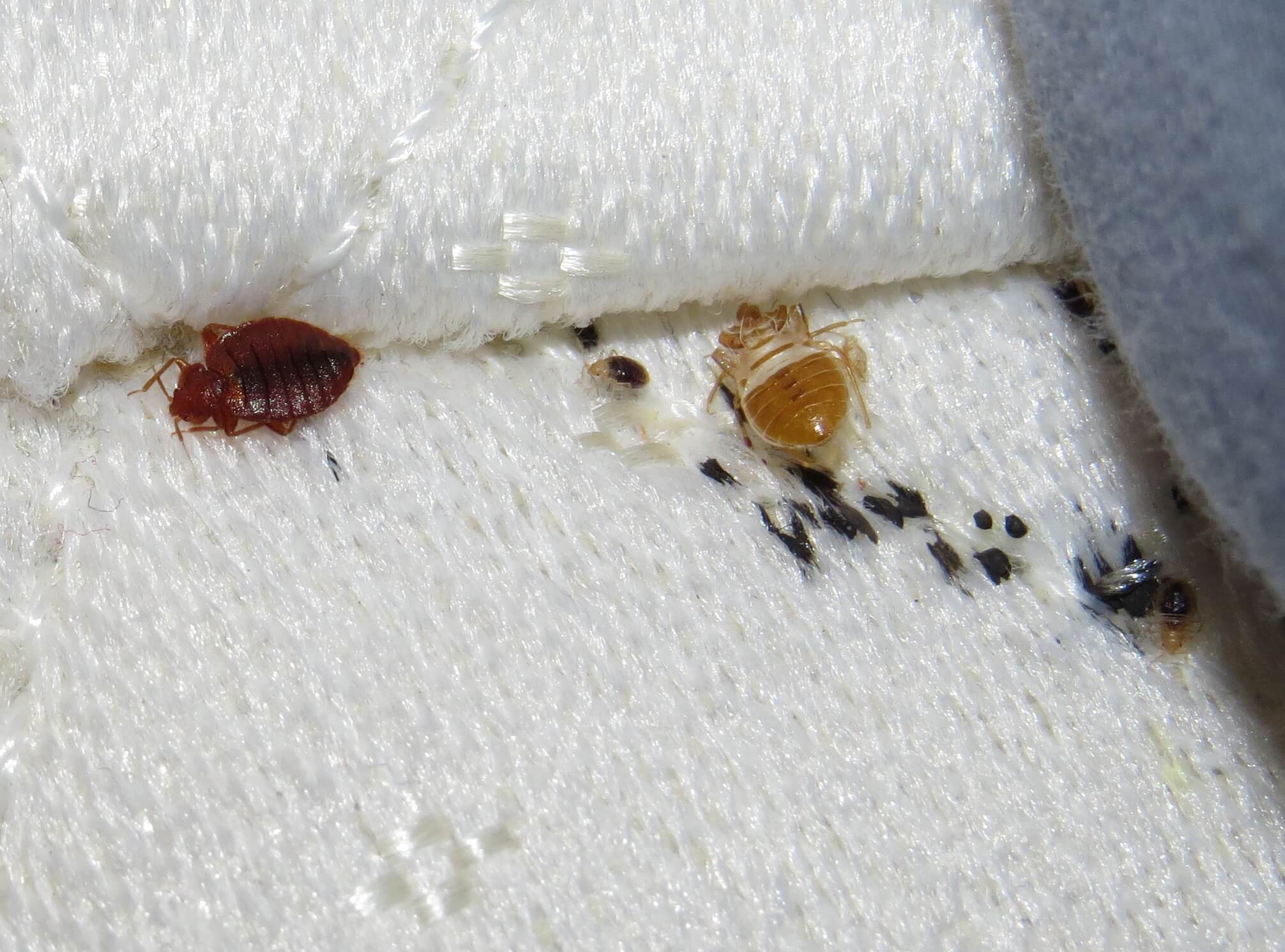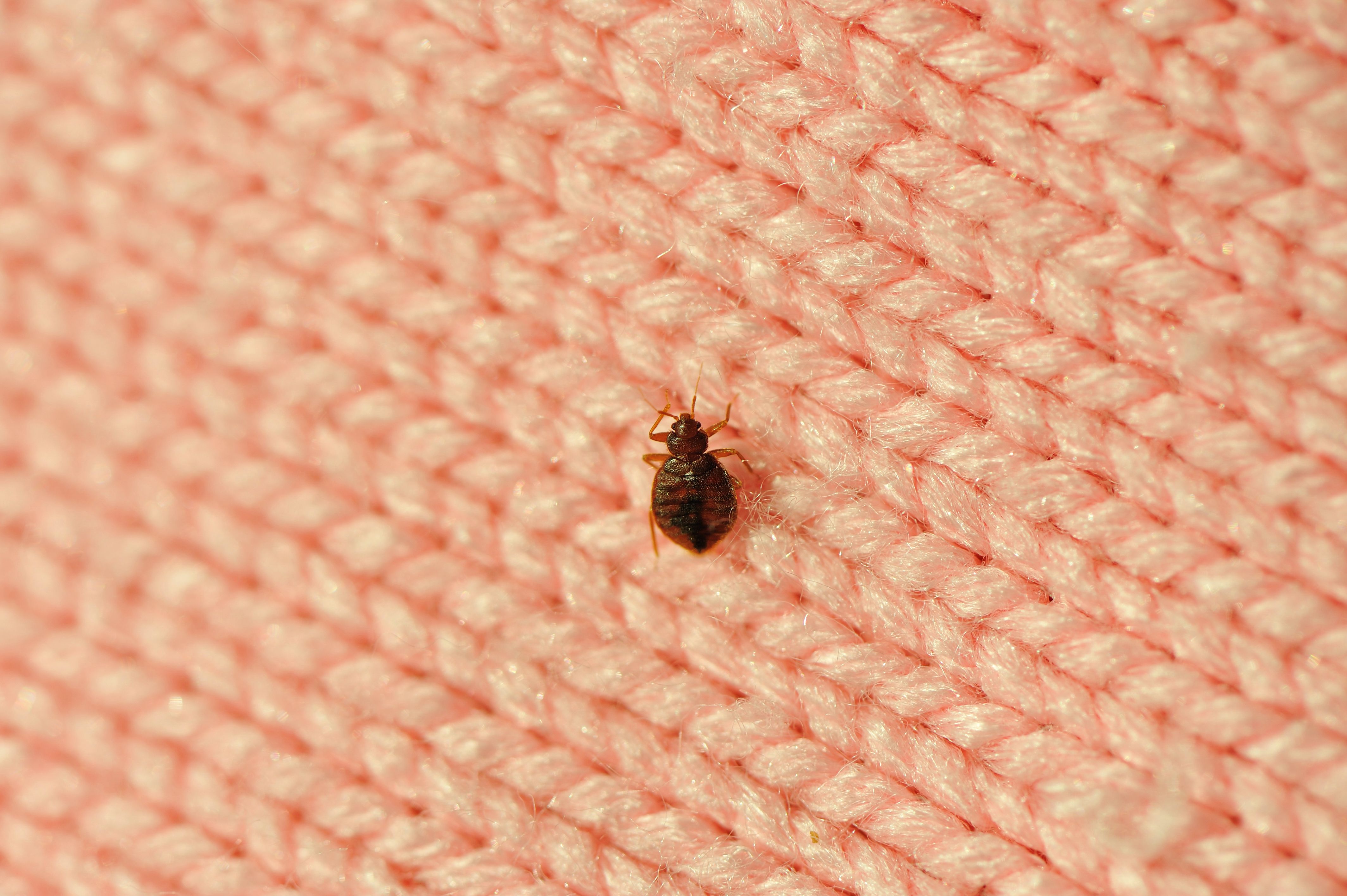Where Bed Bugs Hide In The Home?
BEDBUGS: HIDDEN IN PLAIN SIGHT
Bed bugs have been and continue to be a common pest that plagues everyone, everywhere in the world. A single female bed bug can fully mature within 37 days and reproduce roughly up to 500 eggs during her up to one-year lifecycle, depending on the availability of blood hosts (Introduction to bedbugs, 2016). Given such a fast lifecycle, it is easy to realize the potential danger and speed of an infestation rapidly becoming out of control.
Unless searching for a blood host, bed bugs typically prefer waiting in crevices until they become active. Due to their exoskeleton, they can easily dehydrate if not protected from heat and dry conditions. Bedbugs probe the skin multiple times before finding an ideal location to feed on, resulting in rashes or bumps on the blood host.

However, once the feeding is complete, a process that typically takes 5-10 minutes, the bedbug will retreat into a crack or crevice where other bedbugs have gathered (Miller and Polanco). After a successful feeding cycle, bedbugs are interested in mating and the lifecycle begins anew.
Adult bedbugs can grow to be about 5 millimeters large, have an oval, flattened body shape and a reddy-brown color. Although small, roughly the size of an apple seed, adult bedbugs can be seen with the naked eye. Bedbug eggs however are only about the size of a pinhead so they are much harder to identify (Introduction to bedbugs, 2016).
Ideally, most bed bugs aggregate near crevices close to their blood source, perhaps on the mattress or boxsprings, when they are not feeding. Common locations for hiding in the bedroom can be along seams, piping, or tags of the mattress and box spring or even other furniture in heavily infested rooms (Introduction to bedbugs, 2016).

In heavy infestations where bed bugs are crowded, many bed bugs must seek refuge at distances several yards from the host (Miller and Polanco). According to the EPA, if the room is heavily infested, you may find bed bugs in harboring in locations 5-20 feet from a blood host.
In addition to the bed, bedbugs prefer hiding in the seams of chairs and couches, between cushions, in the folds of curtains, in drawer joints, in electrical receptacles and appliances, under loose wallpaper and wall hangings, at the junction where the wall and the ceiling meet or even in the head of a screw (Introduction to bedbugs, 2016).
They are also adept travelers that can be transported from one room to the next or from person to person by attaching to furniture, luggage, bedding, or clothing. Unfortunately, minor infestations are much more difficult to find and identify.
Indications of bites is not necessarily an indication of bedbugs, since there are many other types of bugs that can be responsible. The delay in the treatment of bedbug infestations can prove challenging and costly. When suspecting bedbug infestations, there are some tell-tale signs to look for. In addition to being able to visibly see bedbugs, according to the Environmental Protection Agency, signs of bedbugs may appear as rusty or reddish stains on bed sheets or mattresses caused by bed bugs being crushed, small dark spots of bug excrement that may bleed on the fabric like a marker would, eggs and eggshells and pale yellow skins that nymphs shed as they grow larger (Introduction to bedbugs, 2016).
Experts believe the recent increase in bed bugs in the United States may be due to more travel, lack of knowledge about preventing infestations, increased resistance of bed bugs to pesticides, and ineffective pest control practices (Introduction to bedbugs, 2016). It is in the interest of bedbugs to spread and infect new territories during their lifecycle.
Bedbugs can hide in plain sight whether it is at home, work, school, hotels, or in vehicles. With the ability to adapt to new blood hosts and hide in crevices, neutralizing infestations before becoming widespread is of the utmost importance. Fortunately, pest control has made advancements in combating this threat. Through integrated pest control techniques involving chemical and non-chemical treatment options, infestations can be contained and neutralized.
Author: Jayme Delafuente
Western Governors University
References
- Introduction to Bed Bugs. (2016, December 13). Retrieved October 22, 2020, from https://www.epa.gov/bedbugs/introduction-bed-bugs
- Miller, D. M., and Polanco, A. (n.d.). Bed Bug Biology and Behavior. Retrieved October 22, 2020, from http://www.vdacs.virginia.gov/pdf/bb-biology1.pdf








